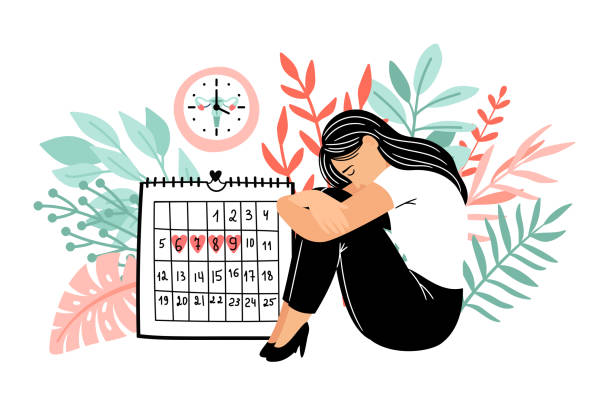Menstrual health is a cornerstone of women’s overall well-being and reflects their hormonal balance, reproductive health, and general fitness. Despite its significance, menstrual health is often misunderstood or overlooked. By understanding the signs of a healthy menstrual cycle and knowing when to consult a doctor, women can ensure better health outcomes and prevent potential complications.
In this article, we’ll explore the characteristics of a healthy menstrual cycle, signs that may indicate an underlying problem, and why addressing menstrual health is essential for overall wellness.
What is a Healthy Menstrual Cycle?
A normal menstrual cycle is more than just regular monthly periods. It encompasses hormonal changes that prepare the body for pregnancy, as well as the shedding of the uterine lining when pregnancy does not occur. A healthy menstrual cycle is consistent and free from excessive pain or discomfort. Here are the key indicators of menstrual health:
1. Regular Cycle Length
A healthy cycle typically ranges from 21 to 35 days. The cycle length can vary slightly between individuals, but consistency is crucial. Studies show that approximately 90% of women have cycles within this range (ACOG, 2022). Irregular or highly variable cycles could indicate a hormonal imbalance or other underlying issues.
2. Normal Period Duration
Most women’s periods last between 3 to 7 days. According to a study published in the Journal of Women’s Health, around 75% of women experience periods within this duration, with shorter or longer durations potentially signaling an underlying condition (Curry et al., 2019).
3. Moderate Flow
Healthy menstrual flow involves light to moderate bleeding, with the need to change pads or tampons every 3-4 hours. Excessively heavy bleeding or the presence of large clots may signal conditions like fibroids or hormonal disorders. Research indicates that menorrhagia (heavy menstrual bleeding) affects 10-30% of reproductive-age women worldwide (Fraser et al., 2015).
4. Minimal Pain and Discomfort
Mild cramps, breast tenderness, or bloating during menstruation are common. However, severe pain that disrupts daily life, known as dysmenorrhea, is not normal and may require medical attention. Dysmenorrhea affects about 45-95% of menstruating women, with severe cases reported in 5-15% (Global Journal of Health Science, 2021).
5. Absence of Abnormal Symptoms
Spotting between periods, extremely large clots, or unusual odors could indicate infections or hormonal imbalances. Healthy periods are free of these complications.
6. Ovulation Regularity
Ovulation typically occurs mid-cycle and may result in minor symptoms, such as mild cramping or light spotting. Irregular ovulation patterns could affect fertility and overall hormonal health. Studies reveal that ovulatory cycles are present in about 80% of women aged 20-35 (ESHRE, 2020).
When to See a Doctor: Warning Signs to Watch For
While some variability in menstrual cycles is normal, certain symptoms should never be ignored. If you notice any of the following, it’s time to consult a gynecologist:
1. Irregular Cycles
Frequent changes in cycle length, missed periods, or cycles shorter than 21 days or longer than 35 days can indicate conditions such as polycystic ovary syndrome (PCOS) or thyroid disorders. Research suggests that PCOS affects 6-12% of women of reproductive age in the U.S. (CDC, 2023), and according to a study in India , the incidence ranged from 2-35% across different states.
2. Heavy Menstrual Bleeding (Menorrhagia)
Bleeding that soaks through pads or tampons every 1-2 hours, or lasts longer than 7 days, is considered heavy and abnormal. Conditions like uterine fibroids, endometriosis, or adenomyosis could be the cause. Uterine fibroids alone are estimated to affect 70-80% of women by age 50, although many of these are asymptomatic and may not cause any problem (NIH, 2022).
3. Severe Menstrual Pain (Dysmenorrhea)
While mild cramping during periods is normal, intense pain that interferes with daily activities may indicate endometriosis, pelvic inflammatory disease (PID), or fibroids. Such pain warrants medical evaluation.
4. Amenorrhea (Absence of Periods)
The absence of periods for three or more months, outside of pregnancy or menopause, may result from hormonal imbalances, excessive stress, extreme weight loss, or conditions like PCOS.
5. Mid-Cycle Spotting or Pain
Unexplained bleeding or pain at any other time apart from your regular period could be a sign of ovulation problems, infections, or uterine abnormalities.
6. Premenstrual Syndrome (PMS) Symptoms
Severe mood swings, fatigue, bloating, or depression that significantly affect quality of life may require treatment. In some cases, this could be linked to premenstrual dysphoric disorder (PMDD), which is a more sever & disabling form of PMS. Approximately 20-30% women may experience varying degrees of PMS & 3-8% of women experience PMDD (APA, 2021).
7. Fertility Concerns
If you’ve been trying to conceive for a year without success, irregular or abnormal cycles could be contributing factors. A doctor can help identify and address these issues.
8. Unusual Physical Symptoms
Sudden weight changes, excessive hair growth, severe acne, or unexplained fatigue may indicate hormonal disorders like hypothyroidism or PCOS.
9. Post-Menstrual Issues
Spotting or pelvic pain after your period ends could signal endometriosis, PID, or other uterine conditions.
Common Causes of Menstrual Health Issues
Many factors can disrupt the menstrual cycle, ranging from lifestyle changes to underlying health conditions. Here are some common causes:
1. Hormonal Imbalances
Conditions like PCOS, thyroid disorders, or menopause can disrupt the normal hormonal fluctuations that regulate the menstrual cycle.
2. Uterine and Ovarian Disorders
Conditions such as fibroids, polyps, endometriosis, or adenomyosis can lead to heavy bleeding, severe pain, and irregular cycles.
3. Stress and Lifestyle Factors
Chronic stress, excessive exercise, or poor nutrition can suppress ovulation and lead to irregular periods or amenorrhea.
4. Medications and Contraceptives
Certain medications, including hormonal contraceptives, can affect cycle length and flow. Discuss any concerns with your doctor if you notice significant changes after starting a new medication.
5. Infections
Pelvic inflammatory disease (PID) or sexually transmitted infections (STIs) can cause abnormal bleeding, pain, and other menstrual irregularities.
6. Chronic Health Conditions
Autoimmune diseases, diabetes, or obesity can also impact menstrual health.
How to Maintain a Healthy Menstrual Cycle
Taking proactive steps to support menstrual health can improve overall well-being and reduce the risk of complications. Here’s how:
1. Maintain a Balanced Diet
Eat a diet rich in fruits, vegetables, whole grains, and lean proteins to support hormonal balance. Include foods high in iron and magnesium to replenish nutrients lost during menstruation.
2. Stay Active
Regular physical activity can help regulate hormones and reduce stress, promoting a healthier cycle. Avoid excessive exercise, as it may lead to irregular or missed periods.
3. Manage Stress
Chronic stress disrupts hormonal balance. Practice mindfulness, yoga, or other relaxation techniques to keep stress levels in check.
4. Keep Track of Your Cycle
Use period-tracking apps or a journal to monitor cycle length, flow, and symptoms. This information can be valuable if you need to consult a doctor.
5. Stay Hydrated
Drinking enough water can help reduce bloating and improve overall energy levels.
6. Regular Check-Ups
Routine visits to a gynecologist ensure early detection and treatment of potential issues.
Conclusion
Menstrual health is a vital aspect of overall well-being, and hence, understanding what’s normal versus what’s not is essential. A healthy menstrual cycle is regular, moderate, and free from debilitating symptoms. However, if you notice irregularities, heavy bleeding, severe pain, or any unusual symptoms, seeking medical advice is crucial.
By addressing menstrual health proactively and consulting a qualified gynecologist when necessary, women can enjoy better reproductive health, improved quality of life, and peace of mind. If you’re experiencing any concerns about your menstrual cycle, don’t hesitate to book an appointment with a trusted specialist. Your health matters, and early intervention can make all the difference.
References:
- ACOG. (2022). “Understanding Your Menstrual Cycle.” Retrieved from https://www.acog.org
- Curry, T. et al. (2019). “Menstrual Health Indicators.” Journal of Women’s Health. Retrieved from PubMed
- Fraser, I. et al. (2015). “Heavy Menstrual Bleeding: Causes and Treatments.” Retrieved from NIH
- CDC. (2023). “Polycystic Ovary Syndrome Facts.” Retrieved from https://www.cdc.gov
- ESHRE. (2020). “Ovulation and Reproductive Health.” Retrieved from https://www.eshre.eu
- APA. (2021). “Understanding PMDD.” Retrieved from https://www.psychiatry.org


